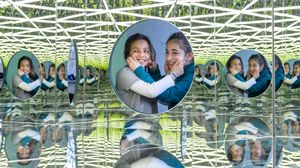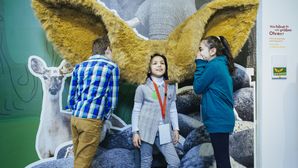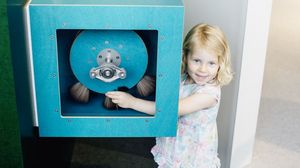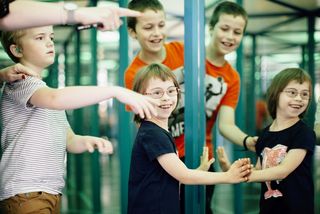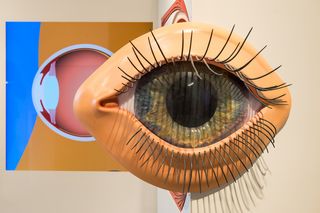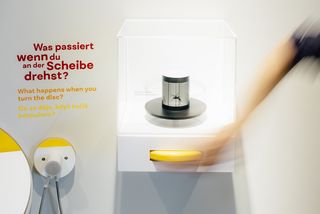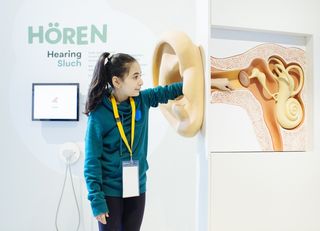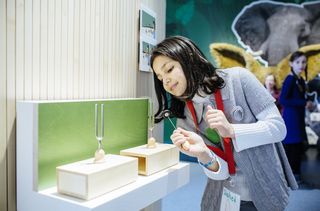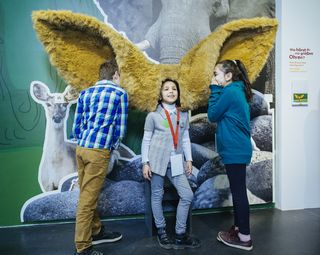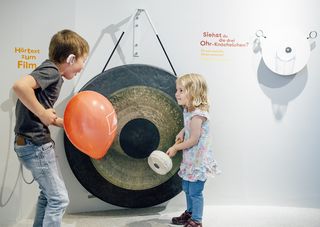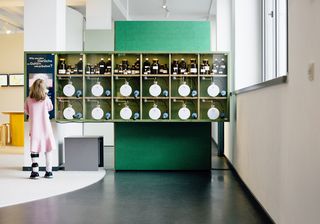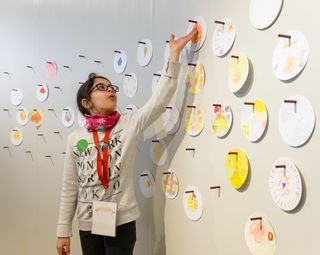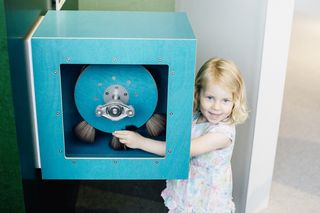The Dresden Children's Museum
Hearing, seeing, smelling, tasting and feeling: with our five senses we’re able to explore the whole world. Each one of us in our own special way. But how do we do it? How do our sensory organs actually work? The Children’s Museum has lots of experimental stations and games for you that are not just fun, but also real eye-openers.
There are five theme-based islands with large models of the human eye, ear, tongue, nose, and skin. They also contain information and films designed to illustrate exactly how each sensory organ works. After that, it’s time for you to start experimenting! Is it possible to hear back-to-front? What does a shadow look like in colour? What mysteries lie hidden inside the three caves? Stuck? Don’t worry: there are lots of imaginatively illustrated instructions to help you out. Each theme-based island also showcases a precious object from the Museum’s collection.
And by the way, the World of the Senses offers full barrier-free access!
Even the narrow mirror maze is wheelchair accessible. You can listen to all the really important information through headphones, watch it on video in German Sign Language, or read it in easy-to-understand texts in German, English and Czech.
The Children’s Museum is ideally suited for children aged 5 to 12. And it’s most fun if you explore it with an accompanying adult – they’re bound to learn something new, too!
The five Senses
SEEING
Half of our brain’s daily output is taken up by our sense of sight. As our most important sensory organ the human eye is faster than most camera lenses and capable of processing vast amounts of information in – literally – the blink of an eye. Our body’s most active muscles are those that control our eyes as they open, close and blink. They perform more than 100,000 such movements every day. Here you’ll find various experiments to test your vision. But beware: don’t let yourself be fooled by our sensory illusions…
TASTE & SMELL
Our sense of smell is such that we can sometimes pick up certain smells from a long way off. Our noses detect various smells, but they also bring back whatever emotions we associate with those smells. Our sense of taste is also linked with our sense of smell. When we smell tasty food, our mouth starts to water; similarly, the stink of rotten eggs prevents us from eating food that is no longer fit for human consumption.
Here you have the opportunity to test your nose on various smelling stations. You’ll also find out what the mysterious taste known as umami is all about...
Hearing
Even unborn babies are able to hear and recognise their mother’s voice. Our sense of hearing is so acute it’s capable of differentiating up to 400,000 different sounds, 24 hours a day.
We can also tell from a person’s voice – its volume and pitch – whether they’re happy, sad, excited or angry. And now it’s time to test your hearing: play our Sound Memory game and find out how many sounds you can tell apart, and how accurately you remember them...
TOUCH
Our skin is able to sense what’s around us even before we’re able to see or hear our surroundings. As our largest sensory organ it responds to the slightest of touches.
It can sense heat or cold and protect us from such dangers. Our fingertips and lips are particularly sensitive as these are the areas that have the highest density of sensory cells.
Inside our dark tactile tunnel you’ll have to rely entirely on your sense of touch and guess what the mysterious objects are. Find out how your skin reacts to hot and cold, or let yourself be tickled pink by our automatic tickling machine…
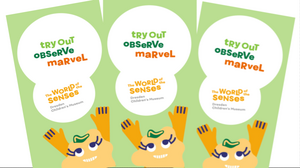
Interactive Flyer: Try out - Observe - Marvel
Our interactive flyer animates you and your family to discover the five senses together!
PDF-Version
Gallery
Supported by
![[Translate to English:] gefördert im Bundesprogramm "Investitionen für nationale Kultureinrichtungen in Ostdeutschland"](/fileadmin/user_upload/DHM/Ausstellungen/Sonderausstellungen/Ausstellungsrueckblick/Sprache/BKM.gif)







